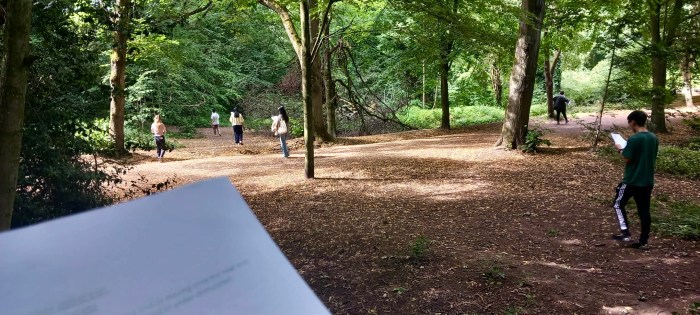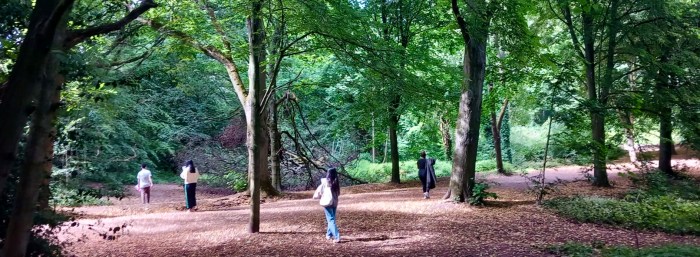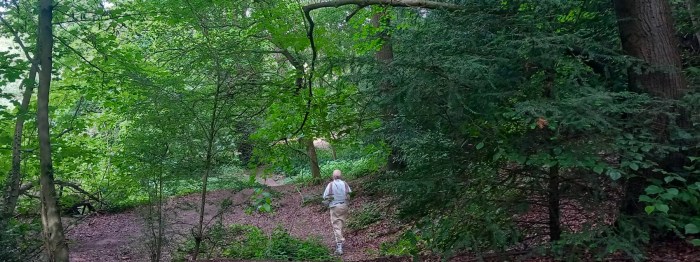Ethnographic Immersion in hampstead heath – Sustainability summer school

As part of SOAS’ ‘Anthropology of Sustainability: Global Challenges and Alternative Futures’ summer school, I was invited by Dr. Saad Quasem to take students on an immersive walk into Hampstead Heath. The walk, building off past workshops I’ve been developing inside and outside the academy, aimed to get students practising ethnographic research methods, and more specifically, to explore how anthropologists are well placed to explore humans’ embeddedness in multi-species environments.
We explored how sensory methodologies allow us to think about ‘sustainability’ (as material structure, discourse and ‘alternative future’) in multi-dimensional ways.
The three sensory activities involved smell, touch and hearing. Some of the questions we explored, following the sensory invitations, included:
How might multi-species infrastructures, such as green corridors in cities, shift how inhabitants relate to non-humans? How might the growth of urban food gardens in many cities provide alternative spaces for humans to form relations with more-than-humans?
In a world where populations increasingly live in environments that shape the body’s genetic make up / cause inter-generational contamination through pollutants, how might this shape how the human body is defined or humans’ sense of entanglement with their wider material environment?
Some of the more personal topics we discussed included:
Traditions around touching or not being able to touch aspects of the environment (tea crops, large trees)
How trees relate to ancestry and how we define ancestry
Memories of grandparents’ teachings around nature
The agency of plants
How we relate to ‘nature’ and ‘culture’ differently depending on where we are in the city (and whether this binary is useful)
Another aim of the workshop was to encourage students to become more self-reflexive as to their assumptions or semi-conscious categories they possess around the natural world. Do they feel plants are animate? how do they define ‘the social’? what does kinship mean to them and does it include multiple species? How do we define ‘the human’?
In anthropology, self-reflexivity is crucial if ethnographers want to avoid projecting presumed universal truths onto other groups. Considering the non-linguistic and sensory way in which humans engage with the wider ecological surroundings (and are shaped by them), it might take touch, smell and hearing (etc) in an outside location to become more aware as to one’s deeply held notions.
Ecological pedagogies, inspired by teachers such as Robin Wall Kimmerer, encourage individuals to place themselves, in both an affective, sensory and discursive way, within the wider context of the ecosystem (allowing that the scientific language of ‘ecosystem’ does not reflect the plethora of how humans conceive of the wider environment). Feeling and encountering the interconnection between multiple beings may make this material reality more immediate – and easier to connect to wider anthropological discussions – than text based or more abstract encounters.
Two students mentioned feeling ‘calm’ after the walk/workshop. The benefits of taking learning out of the academy and outside, and distancing learning from a primarily text/language based format, are multiple. I also sense (and drawing from multiple students’ comments to me) that the context of a park / the outdoors might be less intimating for many students than classrooms in a university building, allowing for more free flowing discussion (and involvement of students who might not normally talk in class).


